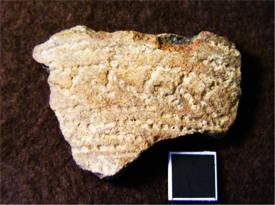Ben Miller
Source - http://www.culture24.org.uk/history-and-heritage/archaeology/art505337-amazing-bronze-age-burial-in-buckinghamshire-contained-skeletons-of-two-children-say-archaeologists
Archaeologists study hundreds of bone fragments from Bronze Age children aged between 10 and 12

Archaeologists have been examining hundreds of bones from two skeletons in Buckinghamshire © MOLA Northampton
The skeletons of two pre-pubescent children have been discovered by archaeologists during an “amazing” dig at the back of an antiques shop which has also revealed pottery suggesting their bones could come from a Bronze Age burial.
The bodies, whose teeth pinpointed their owners’ ages to between ten and 12, contained 250 bones and fragments. Experts in Marlow say the pit they were found in, which was originally opened up in March 2013, included a burial mound disturbed during the 12th century.

“Local historians will know that the earliest recording of the town of Marlow dates from 1015AD, where it is referred to as Merelafan in the Codex Diplomaticus Aevi Saxonici,” says John Laker, of Archaeology in Marlow, who collaborated with Museum of London Archaeology Northampton on the 200 square metre excavation.
“Among the remains was a piece of Bronze Age beaker pottery which was probably from a pot buried with the bones, as well as medieval finds from the 12th-14th centuries.
“The discovery of Bronze Age pottery raises the possibility that the bones might be from a Bronze Age burial, and likely a barrow or burial mound.
“Bone samples from the two identified individuals were sent to the USA for radiocarbon dating. The skeletons were found to date from between 2140 and 1950 BC, making them early Bronze Age in date.”
An aerial survey around the nearby Low Grounds Farm cemetery identified the site as a possible island.
“The burials would have been separated from the farm by a section of the Thames,” explains Laker.
“As this cemetery has been dated by form only, it is unknown whether the two sites were active at the same time.
“It looks like people lived in Marlow well before Anglo-Saxon times and that Marlow was a des-res around 4,500 years ago.”
One of the pottery pieces, weighing 12g, is decorated with bands of multiple horizontal lines of comb impressions, flanking a single surviving 10mm-wide zone with a saw-tooth pattern formed from comb impressions.
Archaeologists have compiled a 46-page report on the discoveries.